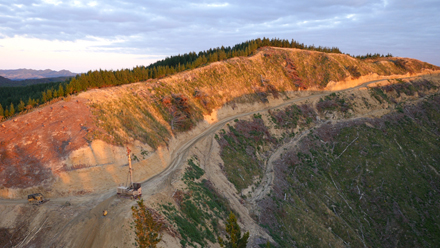 The launch of environmental standards in New Zealand for plantation forestry will ensure uniformity across councils, but may lead to an increase in the use of consultants. Sources: Otago Daily Times, New Zealand Herald, Southern Rural Life
The launch of environmental standards in New Zealand for plantation forestry will ensure uniformity across councils, but may lead to an increase in the use of consultants. Sources: Otago Daily Times, New Zealand Herald, Southern Rural Life
Rural consultants and rare galaxiids could benefit from the new National Environmental Standards for Plantation Forestry (NESPF) introduced on 1 May.
Farm Forestry New Zealand president Neil Cullen said the standards had taken seven years to come into effect. The requirements were “not onerous” but it would probably mean farmers would more likely use consultants to manage their harvest.
“The NESPF was initiated by large forestry corporates who were dealing with about 30 different councils, all which had different rules,” Mr Cullen said. “They wanted a standard set of rules throughout the country and it is beneficial in that respect.”
“Returns from forestry are very good and I don’t think the new requirements are going to add that much to the costs.” he said.
He said the standards would impact farmers wishing to harvest or plant plantations. The standards included risk assessment calculators for erosion, wilding conifers and fish spawning.
The Otago Regional Council has some tougher rules than those outlined by the standards, especially when dealing with rare galaxiids that live in many of the streams in the region.
Farmers must use a fishing spawning indicator, available on the MPI website, which determines if rare galaxiids, eels and other waterlife will be affected.
“There are rules about stream crossings and culverts, which have to be fish-friendly. In some places where the galaxiids survive upstream, it is because culverts are set higher and do not allow trout through [which eat the galaxiids],” Mr Cullen said.
The standards also covered afforestation, pruning and thinning, earthworks, forestry quarrying, harvesting, mechanical land preparation and replanting.
“When harvesting, they have to have a harvest management plan available for the Otago Regional Council if they ask for one.”
A harvest plan looks at areas such as access, impact on waterways and earthworks effects on the environment.
“If planning a new forest, farmers have to use the wilding pine calculator on the Ministry of Primary Industries’ website to calculate the risk of wildings before planting.”
There was also an erosion susceptibility calculator, which determined how prone a specific area was to erosion.
“That does not really affect Otago and Southland, as we haven’t got any highly erodable country down here.”
A NESPF workshop will be held at Rosebank Lodge in Balclutha on 29 May from 9am to noon.







